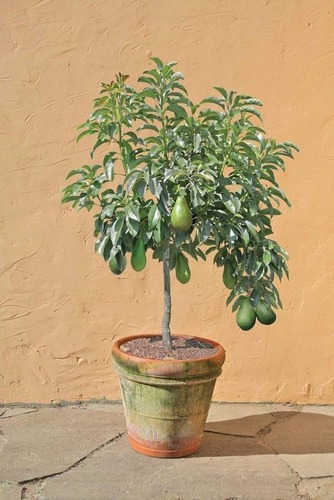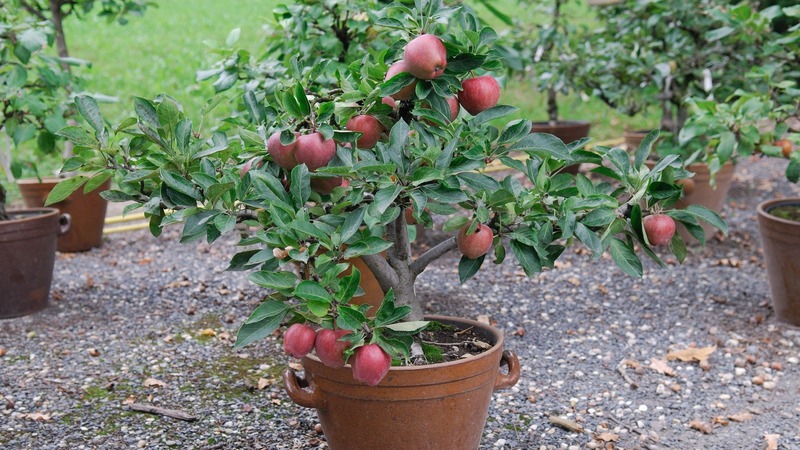If you love the idea of growing fruit trees but have limited space, you’re in luck! In this article, we’ll explore the top 10 best dwarf fruit trees perfect for small gardens, patios, or balconies. These compact trees offer the same delicious fruit as their larger counterparts, but in a size that fits beautifully into any tight spot. Whether you’re looking to add a touch of greenery to your urban space or enjoy fresh, homegrown fruit, these dwarf trees are your ideal solution.
1. Dwarf Tangerine

Homegrown citrus isn’t just for gardeners in warm, sunny areas; you can also grow them in containers and enjoy their fresh scent and tangy fruit, even in colder northern homes.
Regular citrus trees are usually too large for indoor growing, but dwarf varieties are bred to stay smaller and produce fruit faster. Growing them in containers helps control their size as well. If you’re just starting with citrus, go for dwarf types that are known to thrive and bear fruit indoors.
Dwarf Tangerines, for instance, are smaller than regular tangerines, reaching about 4-6 feet in height. They have a sweet, slightly tart taste and are easy to peel.
2. Cherry

Dwarf cherry trees are compact, decorative versions of cherry trees, perfect for growing in small gardens, backyards, or any limited space. Their fruits are some of the most popular because they are tasty and loaded with vitamins, minerals, and beneficial plant compounds that have strong health benefits. All types of cherries are nutritious and rich in fiber, vitamins, and minerals.
These trees are visually appealing throughout the year, from their beautiful spring flowers to their juicy fruits in the middle of summer. They are generally low-maintenance, self-pollinating, and simple to care for, which makes them a great choice for beginners.
To plant them, choose a sunny spot with good air circulation, and avoid areas near large trees or buildings that might cast shade on them. Ideally, cherry trees need at least 6 hours of sunlight each day. They thrive in deep, well-drained soil. Space sweet cherries 35 to 40 feet apart, or 5 to 10 feet for dwarf varieties.
3. Avocado Tree

Avocados originate from Mexico and Central America, but they are now grown in many parts of the world. While some people call them fruits and others consider them vegetables, avocados are actually classified as fruits, specifically as berries.
The fruits are healthy, versatile, and tasty, which is why they have become a staple in kitchens worldwide. They are packed with nutrients, offering a great source of healthy fats, fiber, and various vitamins and minerals. They are especially rich in nutrients that many people often lack, such as magnesium, vitamin B6, vitamin C, vitamin E, and folate. They also contain anti-inflammatory and antioxidant properties, which may help lower the risk of heart disease.
You can grow an avocado tree in a 12-16 inch container to keep its size to about 5-6 feet. While it will produce fruit, the fruit size will be smaller than that of a standard avocado tree. They also are unique houseplants with attractive foliage, perfect for a warm, bright windowsill, although they usually only live for a few years indoors. Growing avocado plants from the large seeds found in store-bought avocados is an easy and enjoyable project.
4. Dwarf Cavendish Banana

Tropical houseplants are a favorite for many of us! Growing plants like Boston ferns, crotons, bromeliads, or even a dwarf banana tree can brighten up your home or garden, adding a touch of lush greenery to your surroundings.
The Dwarf Cavendish banana plant is a small variety that produces large, sweet yellow bananas. The plant reaches about 3–4 feet in height, with bright green leaves. It is ideal for growing in containers since it doesn’t take up much space. The bananas have a sweet and creamy flavor with a hint of citrus.
Bananas are fresh, versatile, and relatively affordable fruits. They are packed with important nutrients and can help with weight loss, digestion, and heart health. If you’re looking to add more healthy fruits to your diet, bananas are a fantastic option.
5. Dwarf Orange

Dwarf orange trees are a smaller, more compact version of regular orange trees, usually growing to about 5 to 8 feet tall and needing only minimal pruning to stay at a manageable size.
These trees thrive in indoor gardens or outdoor container gardens as long as they are kept warm, but they require plenty of sunlight. If your location doesn’t get at least 8 hours of full sun each day, it may not be worth investing in these trees. However, if you can provide the right conditions, such as a sunny spot in your balcony garden, they should start producing fruit twice a year once they are 2 to 3 years old.
Oranges are loved for their natural sweetness, the variety of types available, and their wide range of uses. They are low in calories and packed with nutrients, especially vitamin C. Additionally, oranges contain various plant compounds and antioxidants that can help reduce inflammation and fight against diseases. You can enjoy them as fresh fruit, in juices and marmalades, or use their zest to add a tangy flavor to cakes and desserts.
6. Dwarf Mulberry

This berry is a species of flowering plant that belongs to the mulberry family and is native to southwestern, central, and eastern Asia. It is easy to grow and produces an abundance of sweet, medium-sized fruits, making it a great option for growing in pots. When grown in containers, these plants can yield multiple crops per year, even in their first season, and they continue to flower and fruit as long as they have warm temperatures and enough light.
Mulberries are popular for their sweet flavor, great nutritional value, and numerous health benefits. They are grown for their edible fruits, which can be enjoyed fresh or used to make wine, fruit juice, tea, jam, and canned foods. They can also be dried and eaten as a snack. In traditional medicine, mulberries have been used to naturally treat a variety of health conditions.
Some of the best dwarf varieties to consider are Black Beauty Dwarf Mulberry, White Satin Dwarf Mulberry, Red Baron Dwarf Mulberry, Black Satin Dwarf Mulberry, and Dwarf Everbearing Mulberry.
7. Lemon

Dwarf lemon trees are excellent choices for container gardening. Their compact size makes them suitable for both indoor and outdoor settings, providing a tropical vibe all year long, even during winter. They are ideal for anyone who wants to enjoy fresh citrus fruits at home but has limited space.
Lemons are rich in nutrients that can help maintain heart health, prevent kidney stones, and protect against anemia, among other benefits. They are packed with vitamin C, fiber, and helpful plant compounds that promote heart health, aid in weight management, and support digestion.
These trees thrive in containers and are easy to care for, making them perfect for beginners. Even though they are small, they yield plenty of fruit for your drinks and desserts. Their dark green leaves and twisted branches make them attractive houseplants, even when not bearing fruit.
8. Dwarf Olive Tree

The Dwarf Olive Tree is a popular choice for bringing a Mediterranean feel to gardens. These versatile, long-lived plants can be shaped as either bushes or small trees. They are great for potted patio plants since they are low-growing evergreens with silvery-green leaves, small white flowers, and small black fruit. On a breezy day, the young branches with leathery, silvery-grey leaves create a shimmering effect in the light.
These trees give small, oval fruits rich in healthy monounsaturated fats and antioxidants like vitamin E, which help protect the body from damage caused by free radicals. They are full of nutrients that support heart health and overall cardiometabolic well-being, including the heart, blood, and blood vessels.
9. Dwarf Apple Tree

Apple trees are a wonderful addition to any backyard, offering shade and tasty fruit. For smaller gardens or those who don’t want to manage a large tree, a dwarf apple tree is a perfect choice. These trees usually grow to 8 to 10 feet tall with a spread of 6 to 8 feet, making them ideal for small spaces like gardens, patios, or balconies. Their smaller size also makes them easier to care for, with simpler pruning and fruit harvesting.
These sweet fruits are packed with important nutrients like fiber and antioxidants, which can help lower blood sugar levels and support heart health. While they are often eaten raw, apples can also be used in many recipes, juices, and drinks.
10. Dwarf Peach

Dwarf peach trees are small, compact peach trees perfect for home gardens. They grow to only about 5-7 feet tall, making them easy to care for while still producing full-sized, delicious peaches. These trees offer the beauty of spring blossoms, lush leaves, and tasty fruit in a size that’s ideal for backyards. Despite their small size, you can harvest up to 3 bushels of peaches each year.
Peaches are sweet, juicy fruits known for their unique color and flavor, and have been a favorite summer treat for centuries since they originated in China. They can be enjoyed on their own, in smoothies, or as part of desserts. The hard pit in the center is not edible, but the soft, juicy flesh and thin, fuzzy skin are full of flavor and nutrients.

